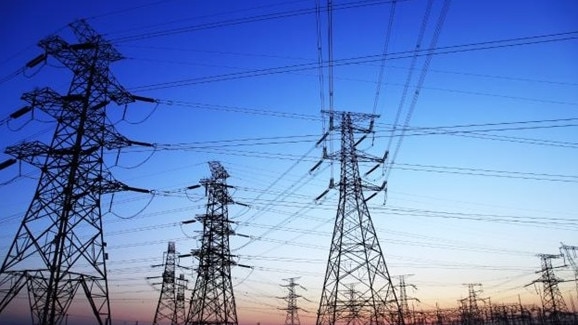
Contrary to the analysis of both AEMO and CSIRO, the Frontier nuclear scenarios are not just cheaper, but by a large margin. How can such large differences be understood intuitively, by those of us without access to the complex modelling involved?
The question seems simple: what mix of generation and storage would be cheapest to meet future demand? Starting afresh, with just one central decision-maker, a tentative answer can be built up by looking at the changing conditions over the typical day.
During daylight, renewables (solar and wind) have the cheapest capital and running cost, even allowing for their variability. At night, wind often continues to generate but will need to be supplemented by storage – batteries and pumped hydro. These can fill the gap at modest cost, even allowing for the extra renewables production needed to replenish depleted storage. But with current levels of storage, this will not be enough. Another form of generation is needed.
Gas or nuclear? The capital cost of gas is around one-fifth of nuclear. Gas has a much higher running cost and emits carbon dioxide. But AMEO scenarios envisage that shortages of solar, wind and storage will not happen often. There will have to be substantial gas capacity to manage these periods, but gas generators will operate only about 5 per cent of the time.
What would be the benefit from adding nuclear, when each of these supply components is significantly cheaper? Do you get a cheaper total cost by running the most expensive source for longer, allowing some reduction in spending on renewables and storage?
Frontier envisages doing just this: nuclear will run most of the time. But this can reduce total costs only if the saving from reduced storage and gas outweighs the higher capital cost of nuclear.
Comparing different running costs is, conceptually, straightforward. But comparing capital costs is a challenge, given their quite different operational lifetimes. The nuclear lifetime is perhaps double that of other sources, extending way beyond the term of the scenarios of both AEMO and Frontier.
CSIRO addresses this issue by comparing gas and nuclear over a fifty-year period, renewing the shorter-lived alternative supply sources after their twenty-five-year lifetimes. There are significant funding-cost benefits from not having to make such large capital expenditure up front, as is required for nuclear. The non-nuclear sources maintain their clear cost advantage.
Why, then, does Frontier give such a decisive cost advantage to nuclear? Perhaps the coal component of their mix provides a partial answer. Allowing a substantial part of the existing coal generators to run for up to a decade longer than planned provides a big advantage. Frontier includes only marginal cost (fuel, operations, and routine maintenance) on the grounds that the capital cost of coal generators is sunk cost, with no economic value. The owners of the generators may disagree.
But this can’t be the whole answer: Even when coal is no longer in the mix, Frontier’s costing is still lower. The different capacity mix doesn’t seem enough, as storage and gas capacity differ little in their scenarios. More detail from Frontier might resolve these puzzles, but scenario uncertainties will still abound.
Over the next decade, we will learn more about a range of issues: solar/wind weather patterns; the impact of distributed batteries (including EV-to-grid connections); scope for reducing storage costs and transmission needs; scope for shifting demand into low-cost periods; the role of industries that can use electricity flexibly; the capacity of rooftop solar, excluded from these calculations, to supply the grid at minimal cost; and the challenges in keeping the old coal generators running.
And we will learn more from overseas experience about nuclear costs – small modular reactors as well as conventional large-scale units.
Could we mimic the smooth, Korean-built turnkey project in the UAE, or are the cost blowouts and time overruns of Hinkley Point in Britain more likely? Global experience with big-project cost blowouts puts nuclear at the top of the overrun list.
With all this uncertainty, the sensible way forward is to minimise capital expenditure and maximise flexibility to adapt the grid to changing circumstances. Such a strategy would look something like the AEMO Optimal Development Path, tweaked over time as necessary.
Frontier Economics has made valuable contributions to this crucial debate, with valid criticism of some earlier analysis. Yes, a renewables-based policy will require substantial excess capacity, and this excess will require transmission. Yes, you can’t simply compare “levelised costs” of the different supply sources: you have to look at the capacity mix as a whole. Yes, the longer life of nuclear compared with renewables needs to be considered. Yes, the National Energy Market is no longer fit for purpose. And yes, the transition will almost certainly cost much more than current estimates, even if it is the cheapest way forward.
Nuclear may well have a place in Australia’s longer-term grid, but the urgent need is to replace fossil-fuel generation.
Frontier Economics’ plan would delay this replacement and fails to make an intuitively convincing case that adding nuclear will substantially reduce the costs of this necessary transition.
Stephen Grenville is a former Reserve Bank deputy governor and a non-resident fellow at the Lowy Institute.



Frontier Economics’ advocacy for nuclear in the electricity mix makes useful points in the debate. But it arrives at the wrong answer.